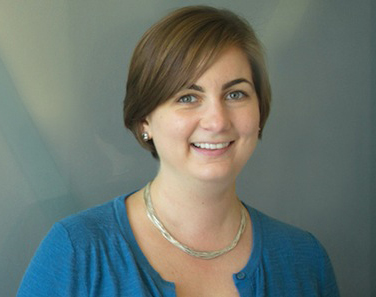
Video by Elizabeth Bayne
Megan McCain first saw a real human heart her junior year of college.
She held it in her hands – dark red, squishy, the size of a fist. Her first thought was: “Wow, look at the valves, these thin, delicate structures that have to open and close every second of our lives.”
Her second thought: “Wow, there’s a lot of plaques of fat. I need to stop eating French fries.”
Nine years later, McCain — now an assistant professor of biomedical engineering and stem cell biology and regenerative medicine at the USC Viterbi School of Engineering and Keck School of Medicine of USC — is trying to re-create the human heart on a chip.
This is not the kind of chip that leads to arterial plaque, of course, but the kind that perfectly re-creates the cardiac cells and mechanical forces of the human heart. It’s slice of glass, the size of a quarter, tiered with four layers, including real pumping cardiac cells and the sticky fibronectin that gives them shape. It’s not a computer chip per se, but it’s fabricated in much the same way as the 64 bit A7 chip in your iPhone.
If all goes well, these “organs-on-chip” may offer a rather dramatic new testing ground for new drugs, as well as a miniature lab for personalized pharmaceutical testing. Certainly, MIT’s “Technology Review” thought so: they named McCain among 2014’s “35 top innovators in the world under 35,” a list that spans scientists and technologists in both academia and industry.
Consider the future. Heart disease is currently public enemy No. 1 in the U.S., having claimed more American lives in 2013 than the first and second world wars combined. Imagine walking into a doctor’s office in 10 years. Before the doctor just prescribes you some ACE Inhibitors and a Beta Blocker, the medicines can be tested on your very own heart cells without ever entering your body. Using a technique of converting your own skin cells to stem cells and from there to heart cells, the newly harvested tissue might be tested in a 2.5 cm laboratory similar to McCain’s.
But the potential for the pharmaceutical industry is even more astonishing. According to Forbes, 95 percent of all drugs fail in humans, proving either too toxic or too ineffective. It’s one reason, Forbes speculates, that the average cost of a FDA approved drug is around $5 billion.
With organs-on-chip, “you can fail fast and fail cheap,” said McCain. “If something’s going to interact poorly in the human heart, you want to be able catch it early.”
At present, if Pfizer or Eli Lilly wants to test a new heart disease drug, they have two options: animal testing, primarily in mice, or testing cell cultures in a petri dish.
But both have obvious drawbacks. Mice may be complex biological organisms, but they’re not always a good predictor of what works in humans. And haphazard cell cultures in a dish don’t replicate a working human heart.
For example, let’s consider that human heart: millions of cardiac myocytes — heart muscle cells — contracting in one glorious, simultaneous symphony. Throwing them in a petri dish allows for none of these mechanical forces – all the stretching, squishing, pulling real heart cells must respond to. McCain’s heart-on-chip promises not only to replicate the precise horizontal alignment of myocytes — physically and electrically bound in cozy horizontal rows — but also the very stiffness and shape found inside humans.
McCain likes muscles. She thinks about them as she does spin class at 6:30 in the evening. She wonders how efficiently her heart is pumping blood and whether her tiny chip can do the same (unlike her real heart, the chip can measure that).
The real human heart has lots of collagen. While at Harvard, McCain had the idea of replicating that Jell-O-like texture in her heart-on-a-chip. So she started growing myocytes on soft gelatin hydrogel instead of silicone rubber. Now the myocytes are much happier: they end up living for a month rather than a week — a rather important thing if you want to test the longer term effects of drugs.
“Mechanical forces,” she notes, “have not been well studied in the human heart. For example, the stiffness affects how well the myocytes contract and couple together in the heart.”
One of the big challenges of heart disease is understanding all the underlying mechanisms that cause it. According to McCain, there’s just so much happening at once: the cells are exploding in size, the heart becomes stiffer and the rows of cells become misaligned. Which factor is the most significant? McCain is hoping to model these effects individually, possibly finding new insights into therapeutic drugs.
McCain, who as a child dreamed of being a Disney animator, has long forgotten about drawing cartoon mice. But she’s still very proud of her “home movies” — beating myocytes captured at hundreds of frames a second under a fluorescent microscope.
For her, watching thousands of myocyctes beating in perfect unison, that’s as cinematic as any fantasy from Never-Never Land or King Triton’s kingdom or the 100-Acre Woods.
After all, it’s the heart at its most fundamental level.
